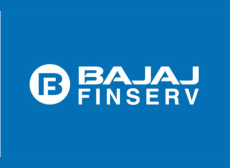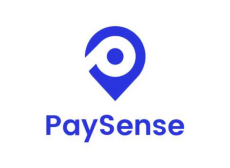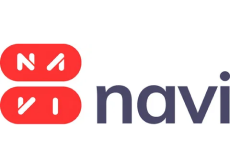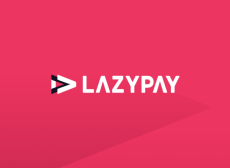Documents required
Education loan is a type of advance financial aid provided to students. The loan covers tuition fee, books, and other expenses. This type of loan is available to students from India and abroad.
To apply for an education loan, the applicant needs to fulfill several eligibility criteria. One of the main factors that banks look into is the income of the applicant and his or her co-borrower. A co-borrower can be a parent, spouse, or guardian. Applicants are also required to show proof of other sources of income.
Another factor that banks look into is the applicant’s academic record. For example, ICICI Bank requires a student’s mark-sheets from the 10th and 12th standard. In addition, applicants are required to submit a copy of their income tax returns.
An applicant’s past academic record is an important piece of evidence that shows the bank that the applicant has the ability to repay the loan. Moreover, a strong academic background will help a candidate to receive the loan much sooner.
Another factor that banks consider is the applicant’s age. While the age limit is 18 years, some banks prefer to provide loans to younger applicants. Additionally, a student’s course of study must be accredited. If the course is specialized, a certificate of completion is also needed.
Depending on the lender, the documents required for an education loan will vary. Some common documents include an ID proof, an admission letter, a visa, and travel papers.
Identity proofs include a valid passport or Aadhar card. Other documents can include a driver’s license or a valid voter ID.
Proof of education includes all academic certificates and a certificate of admission. In addition to these, the bank may require a GAP certificate or a GAP affidavit if a student has taken a gap year.
Interest rates
There are numerous banks in India offering a variety of education loans. Each bank is unique in its lending practices. However, some banks offer a variety of schemes, which include loans for professional courses, vocational courses, and studies abroad.
One of the most important aspects of an education loan is the interest rate. Interest rates are based on several factors, including the type of course you are studying, the number of years you plan on pursuing it, and the location where you plan to study.
Depending on your situation, you might be eligible for an education loan without any interest. Some scholarships and government subsidy schemes can help.
In addition to interest, you may also be required to pay a processing fee. This charge will vary from one bank to the next, but can be up to 1%.
You might be interested to know that some banks do not require you to pay any interest during a moratorium period, so long as you continue to make the minimum monthly payments on your loan. As a result, you’ll end up with a lower total cost of borrowing.
The best way to find out what interest rates you’re likely to be offered is to conduct a simple online search. Several free education EMI calculators are available on the web. Once you enter the loan amount and repayment period, the calculator will give you a complete amortisation table and the total principal and interest you’ll owe.
While it’s true that the interest rate on an education loan is not as low as it used to be, it’s still a smart move for those looking to make a good investment.
MCLR
If you are planning to go for a higher education, you may require a student loan. Taking a loan will help you pay for your expenses, including your course fee, exam fees, hostel charges, study tools and more.
A student loan is a type of debt, which can be taken from either banking or non-banking financial institutions. The interest rate charged on a loan depends on the bank.
Generally, an educational loan is granted to a student who has completed higher secondary schooling. This type of loan can be for studies within India or abroad. Students can also take a student loan to attend vocational courses, or study postgraduate course.
The MCLR rate is the rate that the Reserve Bank of India has set for scheduled commercial banks. It is the average one-year rate that the banks will charge. The MCLR rate is updated monthly.
The MCLR is not only used for education loans, but also for other loans such as auto, personal and home loans. Many banks have linked their loan products to the MCLR.
For loans above Rs 7.5 lakh, banks ask for collateral. In addition, they require a third party guarantee.
However, there are some banks that do not ask for collateral for loans up to Rs four lakh. Some of these banks offer concessions to minority groups, scheduled castes and women.
During the repayment period, EMI or estimated monthly installments will be paid. Depending on the type of interest you choose, the amount you will have to pay each month will be determined.
To avail an education loan from an Indian bank, you must be an Indian citizen. You must also have proof of your income.
Taking out an education loan
A student loan is a great way to cover the cost of education. Getting an education is expensive, and without some form of financial help, many families may not be able to afford it.
Some lenders offer low interest rates on educational loans. These can be used to pay for books, tuition, and more.
The first step in getting an education loan is to determine how much you need. You can do this by estimating your current expenses and adding on a monthly loan payment. Remember to factor in any grants or scholarships that you might be eligible for. Also, consider your future career plan and how much you can realistically expect to earn once you graduate.
During this time, you should also consider how long it will take you to repay your loan. If you can make payments on a regular basis, you might be able to save a lot of money. But if you find yourself struggling to meet your payments, you should discuss a payment plan with your lender.
Loan repayment typically takes place over a number of years. Students are allowed to delay repayment for medical or other emergencies. However, it is important to remember that paying late will damage your credit score.
Education loans come with a grace period, which allows you to defer making your payments until after you’ve graduated. Usually, this period is six months, but you can opt for a longer one. This gives you plenty of time to look for a job and raise the funds you need.
When you are applying for an education loan, you will need to fill out a form. Typically, this will require you to provide information about your education, your college, and your course.
Making interest-only payments while in school
Interest-only payments on student loans while in school can save you thousands of dollars in interest over the course of your repayment. However, they can also be a financial burden. If you’re considering an interest-only loan, consider your options carefully.
Student loans can be difficult to manage, particularly if you’re a full-time student without a job. There are ways to make payments easier, though.
For example, some lenders allow you to make small, partial interest payments while in school. In this case, the total balance is lowered over time and you can form good habits for repayment.
Another option is to choose an income-driven repayment plan. While it may not be available from every lender, it can help you keep the Total Loan Cost (TLC) down.
The key to making the most out of an interest-only loan is to plan ahead. If you know you’ll have trouble making payments, you might want to delay your loan until after graduation. Even if you do have a steady source of income, you should still consider a full payment plan. This will reduce your monthly payments and allow you to build a rainy day fund.
Lastly, don’t forget to reevaluate your finances on a regular basis. Make sure you’re not borrowing more than you can afford and that you’re saving money for an emergency fund. Keeping a low loan balance will also decrease your risk of defaulting on your loans when you graduate.
It’s also important to keep in mind that while interest-only payments on student loans while in school are the best way to save on interest, you should also take other measures to lower your overall debt. These include biweekly payments, deferred repayment, and a fixed payment.












